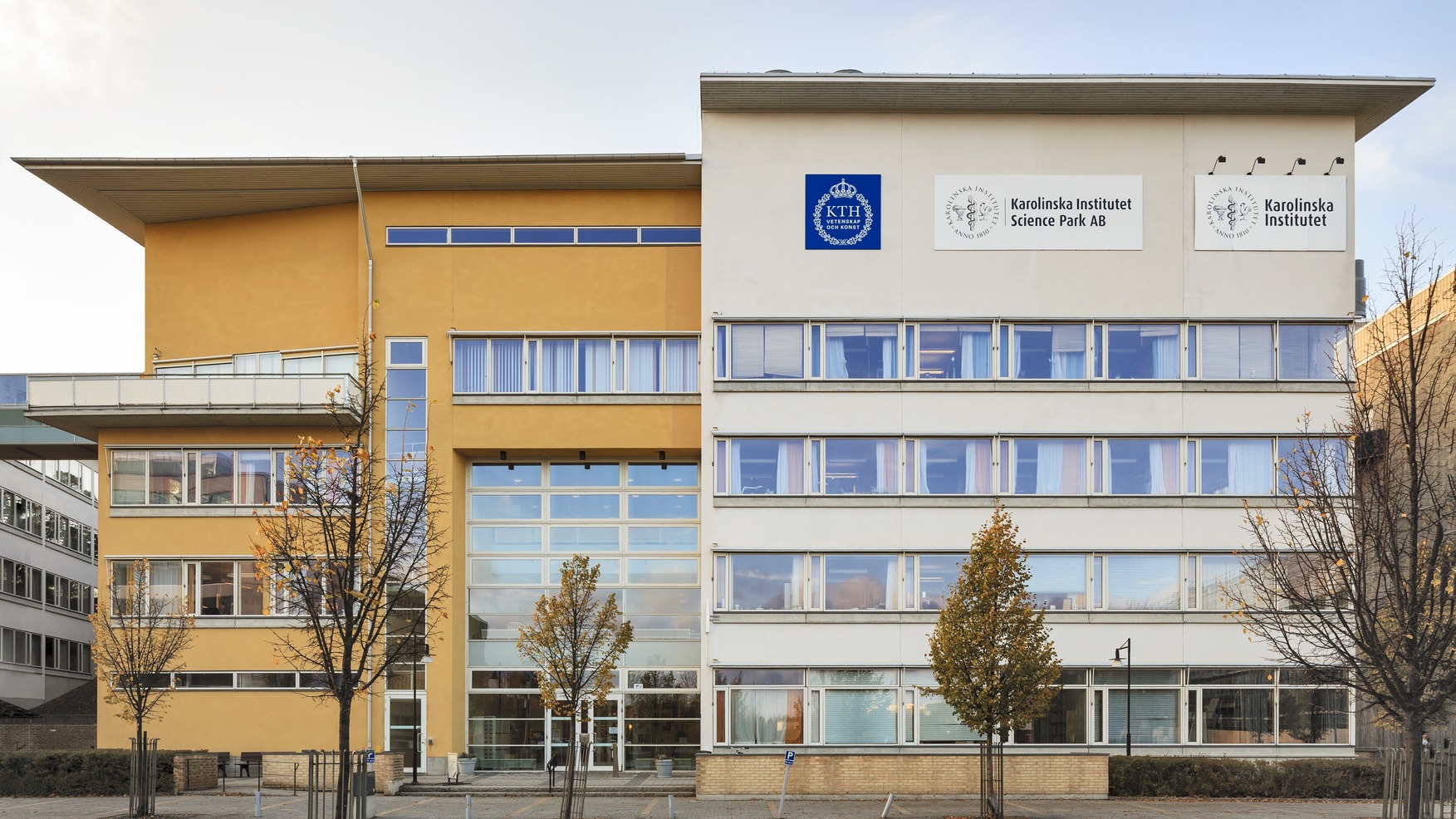Campus Flemingsberg
Campus Flemingsberg

The building is owned and managed by Akademiska Hus Stockholm AB with Karolinska Institutet as tenant.
The building offers a modern creative university and research environment that encourages and facilitates meetings between people.
The building is ventilated, cooled and heated with climate baffles placed in the roof. There are also radiators on floor 6.
You can influence the room temperature yourself +/- 3°C via a room regulator. The middle position is set to a normal temperature of approx. 21°C. If the control is turned towards plus, the heat increases and towards minus it decreases.
Save energy by turning the room regulator down to the middle position, if no one will be staying in the room for several days.
Awnings
The house is equipped with awnings that contribute to the indoor temperature being reached. The awnings are controlled automatically and jointly by solar and wind sensors.
Laboratory
The laboratory premises are equipped with ventilated workplaces intended for different levels of protection, e.g. hoods, LAF and hood benches, etc
Compressed air outlets are available in each lab.
Deionized water is available within the lab. zone.
Power stations are located in locked areas on each floor. In the event of a power failure or tripped fuse, the fault must be rectified before the power supply is operational again. Contact Akademiska Hus in case of repeated power outages.
Outlet panels at lab benches have ground-fault circuit breakers for increased personal safety.
Coolers and freezers are best connected to electrical outlets in the KB rail in the ceiling.
Power outlets marked "data" are intended for computers only and must not be used for other purposes.
For connection of telecommunications and data equipment, contact the Department's telecommunications and data manager.
Consider energy consumption and turn off your computer at the end of the working day.
Lighting
Lighting in corridors and public areas is time-controlled. In addition to the set time, the lighting is switched on by the presence sensor and switched off again after the set time. A few luminaires are always on, so-called led lighting.
In offices, the lighting is controlled automatically via presence detectors. There are also pull switches on the lighting fixtures that allow individual fixtures to be turned off. Keep in mind that the luminaire must be manually switched on again via the pull switch if lighting is desired again.
Lighting outside entrances, windbreaks and in the yard is switched on and off automatically via a twilight relay.
In rest rooms and disabled toilets there are security alarms with red push buttons labeled "emergency signal".
Triggered alarms are indicated by sound and light in the corridor outside each room.
Alarms are reset by pressing the green reset button.
Laboratory
Alarms from protective ventilation are activated if the flow is too low at the respective lab workplace. See further instructions for ventilated workplaces.
Ventilated storage cabinets for hazardous substances are located at the laboratory workplaces.
Gas cylinders are available in all labs.
Emergency stations are installed on all levels.
Emergency signal lift
If the elevator stops between floors, the emergency signal button must be pressed for at least 15 seconds.
A voice connection is then established via the emergency telephone with a staffed elevator emergency company that immediately takes measures.
Alarms from an activated emergency signal in the elevator are relayed both to Akademiska Hus and the elevator emergency company for the rescue of those in distress.
Outside the alarmed elevator, a siren sounds with a pulsating sound.
Evacuate according to signs and evacuation plans.
Lifts must not be used in case of fire.
Automatic fire alarm
There are smoke detectors in the building which automatically trigger an evacuation alarm in case of fire smoke.
The signal to evacuate is given via a bell and a red flashing light.
Triggered alarms go directly to SOS Alarm and to Akademiska Hus.
Fires that cannot be extinguished with deployed hand fire extinguishers must be reported via telephone 112.
Limit the source of the fire by closing windows and doors.
Sprinkler
The house is equipped with a water sprinkler system.
Triggered sprinkler alarms go directly to SOS Alarm and Akademiska Hus.
Fire cells
The building is divided into a number of fire cells to prevent fire and smoke from spreading. Each fire cell is delimited by fire-rated walls and doors.
Doors in fire cell boundaries close automatically to prevent the spread of smoke and must never be blocked with wedges or other means.
Parking
For vehicles with a handicap permit, there is a designated space outside the main entrance Alfred Nobels allé 10.
Entrances and lifts
The building's entrances are accessible and all floors can be reached by lift.
Security alarm in RWC and rest room
On each operating floor there is an accessible toilet, so-called RWC.
In the RWC and rest room there are security alarms with red push buttons.
Alarms are reset inside each room by pressing the white reset button.
Auditoriums
In the building's auditoriums, there is space intended for wheelchairs
Card reader
To gain access to the building, contact Karolinska Institutet's security department.
Surveillance and Burglary
Surveillance of the area is carried out by a security company engaged by Karolinska Institutet.
The alarm center can be reached via telephone 08-728 60 60.
The building has a burglar alarm.
Alarms are forwarded to the security company engaged by Karolinska Institutet, which makes an immediate call.
Some source sorting takes place locally on each floor. The building's waste room is on level 2, where waste is sorted into different fractions. Collection takes place from Alfred Nobels allé 10.
Note that the entrance to the waste room must not be blocked.
When receiving goods, the tenant is responsible for removing pallets and packaging.
Car parking
Parking takes place in public parking areas within the university campus. Parking space for vehicles with a handicap permit is outside the main entrance Alfred Nobels allé 12.
Bicycle parking
Bicycle racks for parking bicycles can be found along Alfred Nobels allé.